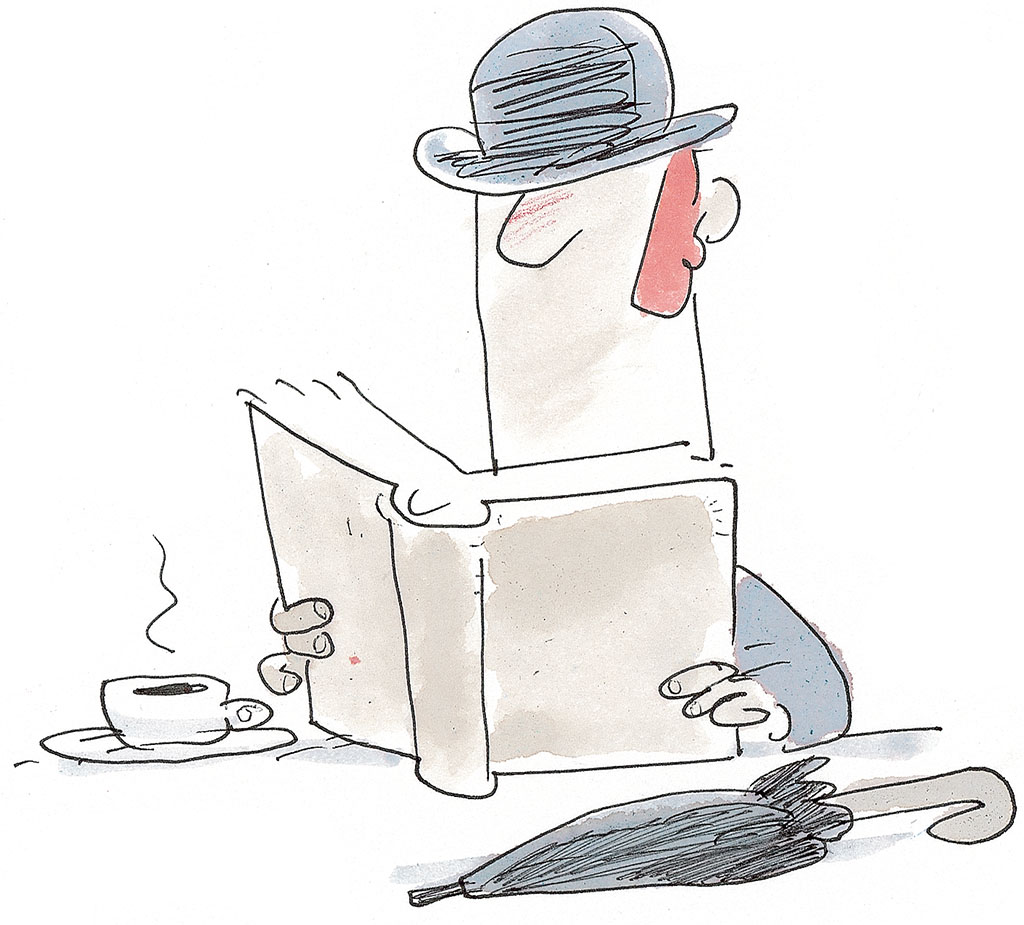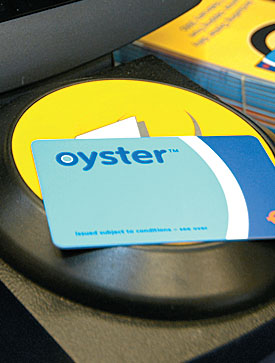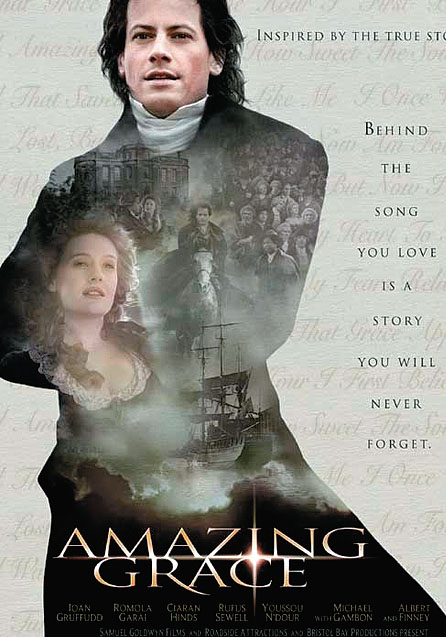
[caption id="BeyondtheBookshelf_img1" align="aligncenter" width="1024"]

A BANQUET OF SIMPLE GIFTS lines our groaning board Beyond the Bookshelf this issue— from Bryn Terfel’s Grammy-winning CD to this spring’s amazing-grace film account of William Wilberforce and the abolition of the slave trade. Regular London travelers especially will want to note Sandra Lawrence’s bubbly account of the new indispensable Oyster Card, while Thomas Hardy fans, warmed by Jim Hargan’s visit to Dorchester, have Ralph Pite’s new biography of the great novelist to digest. Read on, MacDuff!
Simple Gifts, Bryn Terfel, CD, Deutsche Grammophon, Universal Classics Group, N.Y., $16.98.
WHAT A BRILLIANT TITLE for this album. In the depth and complexity of opera music, the simple gift of the great singing voice can sometimes be lost. Bryn Terfel’s own gift comes shining through crystalline clear and majestic in this crossover album—which deservedly won a second Grammy for the Welsh opera giant.
[caption id="BeyondtheBookshelf_img2" align="aligncenter" width="762"]

BRYN TERFEL SIMPLE GIFTS
With songs ranging from the popularly sacred (“Amazing Grace,” “Morning Has Broken” and “How Great Thou Art”) to the classically popular (“The Rose” and “Send In the Clowns”), Terfel’s voice resonates with timbre, depth and clarity. When singing the eponymous title song, he makes it sound simple; “Deep River” he renders deep in soul; Franck’s “Panis Angelicus” is, well, angelic.
In the mythic, starry universe of great Welsh singing voices, Bryn Terfel is a supernova. For those whose idea of vocal music is rap or bluegrass, Simple Gifts and its gifted creator may not be particularly impressive. For the rest of us, this is an album to be received, gifted and treasured with thanks.
London by Cab or by Oyster Card
IN JANUARY, Londoners were stunned to discover that transport costs were about to rise dramatically—higher, even, than the most pessimistic forecast. A single tube fare traveling between two neighboring stops now costs a staggering £4 ($8) cash, so it is important to know how to keep spiraling costs under control.
The new pay-as-you-go Oyster Card is now gradually taking over from the Travelcard, not least because it means an end to ticket queues. This bright blue credit card–style ticket works on a prepay basis and can be “charged” at any one of 3,000 outlets across the city. It is then just swiped across a circular yellow reader at the beginning and end of each journey.
[caption id="BeyondtheBookshelf_img3" align="aligncenter" width="275"]

©2007 TRANSPORT FOR LONDON
The initial £3 ($6) deposit paid is refundable on stays of more than three days, but since Oyster Cards never expire and are transferable, many choose to either keep the card for their next visit or lend it to a friend. Oyster Cards are always cheaper than paying cash, and they are capped at the daily Travelcard rate. The smart mechanism within the system automatically calculates the cheapest fare structure over a day’s travel.
Oyster Cards work especially well on buses because they’re fast to use—passengers swipe the cards just once, as they enter. The new (and unloved) replacements to the much-missed Routemaster double-deckers, the so-called “bendy buses,” have card readers in the middle of the bus as well as the front, though it is an open secret that few actually use them (it’s unwise, of course, to follow suit).
London’s first Hackney Carriage took to the streets in 1625. Nearly 400 years later, black cabs remain an essential part of the city. Drivers still have to take the fiendish “knowledge” test, so they really do know where they’re going, though their readily expressed opinions about anything and everything should not necessarily be taken as a litmus test for the rest of the British population. The old joke that cabbies won’t travel south of the river is not really true nowadays—but residents often make sure by getting in first, then telling the driver their destination. Black cabs are still the only form of transport that can be legally hailed in the street, and some now take credit cards—though it’s wise to check with the driver before traveling.
Of course, the best way to see London is to walk, and an A-Z is invaluable. Ring-bound copies are best—the perfect-bound versions have a tendency to fall apart at the spine.
And driving around the capital? Just don’t. It really isn’t worth it. The western extension of the Congestion Charge in February now means that it costs £8 ($16) just to have a car in the center of the city during weekdays, and meter parking typically costs 20p (40¢) for six minutes.
Useful Web Sites
www.visitbritaindirect.com—Oyster and Travel cards can be purchased from here up to five working days before leaving the United States.
www.visitlondon.co.uk—a general site with a good travel section.
www.tfl.gov.uk—news and updates about all forms of transport in London.
www.bbc.co.uk—the local BBC news section carries up-to-date travel information.
SANDRA LAWRENCE
Amazing Grace
ACROSS THE ATLANTIC OCEAN through the 18th century came a steady stream of British trade ships out of Africa bringing a cargo of humanity as chattel slaves to the Caribbean and the southern American colonies. The deprivation and cruelty of that Middle Passage are well known. Most decent folk in the English-speaking world these days can barely imagine a world where race slavery was respectable, accepted and legal. In the 1780s, William Wilberforce was among a small but impassioned minority who could barely imagine it either.
[caption id="BeyondtheBookshelf_img4" align="aligncenter" width="446"]

Amazing Grace is the story of the 18-year struggle that Wilberforce led in Parliament to gain the abolition of the slave trade. Ioan Gruffudd stars as the idealistic, evangelical MP who was persuaded that serving the cause of abolition was serving God. By and large, the movie tells the story faithfully, truly and well. The timeline of political events between Wilberforce’s famous, electrifying speech in the House of Commons in 1789 and the final, overwhelming passage of the act abolishing the slave trade 200 years ago in 1807 is accurately recounted. Wilberforce’s long, deep friendship with the prodigy prime minister, William Pitt, is touchingly depicted as well.
Of course, this is the movies, and there are always historical accuracies sacrificed for a good story. Eh, HRH the Duke of Clarence would hardly be a fixture in the Commons, for instance. More bothersome to purists like me is the treatment of the good John Newton. Albert Finney plays the author of the famous hymn “Amazing Grace,” who was indeed a councilor to young William Wilberforce and a strong voice in the abolition movement. The movie presents Wilberforce meeting a doddering, drooling Newton dressed in a burlap sack mopping the church floor (implicitly in penance for his early years as a slaver). In reality, when the spiritually-troubled youth sought out Newton in 1785, Newton was rector of St. Mary Woolnorth, the largest, most influential Evangelical church in London. He was received many times over the years by the Newtons in their home. The filmmakers also conveniently took Newton’s well-known final words and gave them to him while he was very much still standing. Oh well.
The movie is rated PG, but this is one of those rare films actually made for adults. Preteens will be bored. Nor is this film light and bright and sparkling. There was little color in the dark street life of late 18th-century London. And its themes are intense and impassioned. That caveat aside, this is first-rate cinema—entertaining, inspiring and educational at one go. It won’t be everyone’s cup of tea, but for British Heritage readers it is a clear thumbs up.
DANA HUNTLEY
Thomas Hardy: The Guarded Life, by Ralph Pite, Yale University Press, New Haven, 475 pages, hardcover, $35.
THREE MAJOR STUDIES of the Victorian writer Thomas Hardy have appeared recently. In 2004 Michael Millgate published Thomas Hardy: A Biography Revisited, a revision of his 1982 work, Thomas Hardy: A Biography. Recently, biographer Claire Tomalin published a highly regarded book titled Thomas Hardy. Now a third study has appeared, written by Ralph Pite, a professor of English at Cardiff University in Wales.
Hardy was born near Dorchester, England, in 1840 to a stonemason and homemaker and attended the village school. As a stonemason’s son, Hardy could not afford to attend college, so he was apprenticed to a local architect, John Hicks. Later, Hardy worked for the London architect Arthur Blomfield in the mid-1860s. Due to illness, he returned to Dorset and again worked for Hicks.
[caption id="BeyondtheBookshelf_img5" align="aligncenter" width="404"]

Despite making a living as an architect, Hardy’s first love was writing. He wrote a few short works while still designing and restoring buildings, mainly churches, but eventually turned exclusively to writing. His first major novel, Far From the Madding Crowd, appeared in 1874. Other major novels included The Return of the Native (1878), The Mayor of Casterbridge (1886), Tess of the D’Urbervilles (1891) and Jude the Obscure (1896). Strong sales of these works enabled Hardy to write full-time for the rest of his life.
When Hardy published Jude the Obscure, however, a violent critical reaction ensued. Victorian readers—and critics—were not ready for a plot involving several extramarital relationships, a marriage resulting from trickery by one party, and a child’s murder at the hands of two other children. The negative reception to this novel helped lead Hardy to abandon novel writing and devote himself to poetry. In 1898 Hardy published Wessex Poems & Other Verses, followed by more volumes in 1914, 1917 and 1928.
Recognizing that many critiques already exist on Hardy’s writings, Ralph Pite’s biography focuses primarily on the writer’s personal life, especially his approach to achieving literary success and his marriages. As the subtitle The Guarded Life suggests, Pite portrays Hardy as highly reserved. The novelist remained dedicated throughout life to maintaining a highly respectable public image, even though his shift from evangelical Christianity to outright agnosticism led him to write increasingly bleaker novels and poems. One way Hardy maintained his respectability was to limit the bluntness of his novels to achieve acceptance from Victorian readers. But he also had a canny sense of how to market himself and find acceptance among the major literati of his day.
As a literature teacher, I would have enjoyed deeper critical analysis of Hardy’s major novels and poems, but this would be to criticize the book unfairly for failing to do something that it does not intend to do. If you seek a book that explores the private life of a major Victorian author, with insights into the Victorian publishing world and the marriage values of the day, Pite’s eminently readable book will serve you well.
DAVID LANGLEY





Comments